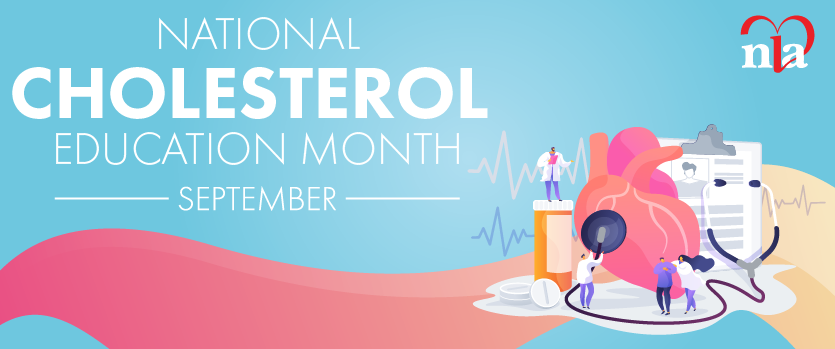Patients with chronic kidney disease (CKD) including those undergoing dialysis have an increased risk of premature cardiovascular disease (CVD).1 CKD patients also have a high rate of coronary death and myocardial infarction — rates equivalent to those of diabetics. CKD, per se, has thus been classified as a coronary heart disease risk equivalent.2 Statin therapy has been proven to reduce the incidence of cardiovascular events and mortality in several at-risk patient populations.3 The efficacy of statins in reducing the risk of CVD and mortality in people with CKD (not on dialysis) is robust.4 However, the impact of statins on cardiovascular outcomes in patients on dialysis is less impressive. Major trials such as the German Diabetes and Dialysis (4D) study5 and the Study to Evaluate the Use of Rosuvastatin in Subjects on Regular Hemodialysis: An Assessment of Survival and Cardiovascular Events (AURORA),6 concluded no benefit in initiation of statin therapy in this population. The release of new guidelines on dyslipidemia management in CKD by the Kidney Disease: Improving Global Outcomes (KDIGO)7 Lipid Work Group, and collateral guidelines by the American College of Cardiology (ACC) and the American Heart Association (AHA) on lipid management in those at high risk for atherosclerotic cardiovascular diseases (ASCVD) were published in 2013. This review summarizes salient aspects of the 2013 KDIGO guidelines on dyslipidemia management in CKD, dosing strategies, and landmark trials that form the backbone for these recommendations.
CKD, Hyperlipidemia, and the Dialysis Paradox
Hyperlipidemia is a well-known cardiovascular risk factor, and lipid-lowering therapy has been consistently shown to improve cardiovascular outcomes in the general population without kidney disease. Dialysis patients with the highest and lowest levels of low-density lipoprotein cholesterol (LDL-C) and total cholesterol (TC) are at the highest risk of adverse outcomes such as all-cause and cardiovascular mortality. This paradoxical association between cholesterol and outcomes appears to be to the result of effect modification by protein energy wasting, inflammation, and malnutrition.7
KDIGO recommendations for initial assessment of lipid status in adults with CKD
– In adults with newly identified CKD (including kidney transplant recipients and those on chronic dialysis), an initial lipid profile is recommended (total cholesterol, LDL, HDL, triglycerides) (1C).
– In adults with CKD (including those treated with chronic dialysis or kidney transplantation), follow-up measurements of lipid levels are not required (Not Graded). Since higher cardiovascular risk and not-elevated LDL are now the primary indications for initiation and adjustment of lipid-lowering therapy in CKD,7 KDIGO recommends a “fire and forget” strategy when initiating lipid therapy in adults with CKD, wherein statins are initiated but not titrated to any target lipid goals.
KDIGO recommendations for pharmacotherapy and dosing of statins in adults with CKD
– In adults age > 50 years and with eGFR< 60 cc/min /1.73 m2 but not treated with chronic dialysis or kidney transplantation, treatment with a statin or statin/ezetimibe combination is recommended (1A).
In the Study of Heart and Renal Protection (SHARP),4 simvastatin plus ezetimibe therapy resulted in a 17 percent reduction in the relative hazard of the primary outcome of major atherosclerotic events in 9,270 participants with CKD, of which 6,247 were not on dialysis.
– In adults ages 18 to 49 years with CKD but not treated with chronic dialysis or kidney transplantation, statin therapy is recommended in people with one or more of the following (2A):
• known coronary disease
• diabetes mellitus
• prior ischemic stroke
• estimated 10-year incidence of coronary death or non-fatal myocardial infarction > 10 percent.
KDIGO recommendations for pharmacotherapy of lipids in adults with dialysis dependent CKD
– In adults with dialysis-dependent CKD, statins or statin/ezetimibe combinations should not be initiated (2A).
This recommendation was based on clinical studies that showed statins do not improve cardiovascular outcomes in hemodialysis patients despite lowering LDL cholesterol. The first of these studies was the 4D study. In the 4D study, atorvastatin had no effect on the single components of the primary end point (a composite of cardiac death, non-fatal MI, and fatal and non-fatal stroke) in a four-year follow-up of 1,255 hemodialysis patients.5 This was followed by a large-scale multicenter trial called the AURORA trial, which evaluated benefits of rosuvastatin in dialysis patients between 50 and 80 years of age. This was a placebo- controlled double-blinded randomized trial that studied the effect of rosuvastatin on multiple primary endpoints, namely non- fatal myocardial infarction, non-fatal stroke, and cardiovascular-specific mortality, in statin naïve patients on hemodialysis. Some 2,776 hemodialysis patients were assigned to either rosuvastatin or placebo and followed for a median of 3.8 years. Rosuvastatin did not reduce the risk of individual components of the primary end point or all-cause mortality, despite a 43 percent reduction in the LDL cholesterol level.6
The largest trial to date was the SHARP trial, which studied the effects of simvastatin plus ezetimibe on primary cardiovascular end points in CKD patients. SHARP assigned 9,270 participants > 40 years old with CKD to receive simvastatin 20 mg plus ezetimibe, 10 mg or placebo and followed them for 4.9 years. Of them, 33 percent of patients were receiving maintenance dialysis. While this study showed a 17 percent risk reduction in the primary outcome of major atherosclerotic events, combination therapy did not show a significant risk reduction in the subgroup of more than 3,000 patients treated with dialysis at baseline.4 When findings from SHARP, 4D, and AURORA are considered together, the clinical benefits of statins — alone or in combination with ezetimibe – are unclear in prevalent dialysis patients. Even if statins do prevent cardiovascular events in dialysis patients, the magnitude of relative risk reduction is substantially lesser than in the earlier stages of CKD.
This recommendation also was supported by a Cochrane review in 20138 that concluded there was no cardiovascular benefit to statin therapy in terms of primary prevention in dialysis-dependent CKD.

KDIGO recommends adult kidney transplant recipients be treated with a statin (2B)
The Assessment of Lescol in Renal Transplant (ALERT) trial9 examined the effects of statin therapy on cardiovascular risk reduction in 2,102 patients ages 30 to 75 years with a functioning kidney transplant. Fluvastatin led to a significant 35 percent relative risk reduction of cardiac death or definite non-fatal MI.
Dosing of Pharmacological Lipid- Lowering Therapy in CKD
CKD patients are at high risk of adverse events from lipid pharmacotherapy because of reduced renal excretion, polypharmacy, and multiple co-morbidities.9 Given the potential for toxicity with high-dose statins in CKD, the KDIGO Work Group suggests the recommended doses. (Table 1)
Regardless of CKD severity, the KDIGO Work Group recommends baseline levels of transaminases to be measured before initiating statin therapy. Routine follow-up of liver function tests or CK levels is not recommended, unless clinical evidence of hepatotoxicity or myopathy ensues. The Work Group also recommends that statins and fibrates not be used concomitantly in patients with CKD. Given that evidence for clinical benefit is higher with statins than fibrates, the Work Group recommends that statins be chosen in preference to fibrates when clinicians are considering pharmacotherapy.
CKD, ESRD, and Atherosclerosis — A Missing Link
Atherosclerosis is an inflammatory disorder. Inflammation in the CKD patient sets the stage for a perfect plaque. A generalized increase in inflammatory markers and acute-phase responses has been noted in CKD patients, especially those on dialysis,10 including C-reactive protein (CRP), serum amyloid A, inflammatory cytokines — including interleukins 1, 2, 4, 5, 6, 12, and 13 — and tumor necrosis factor alpha (TNF- alpha). Numerous studies have shown that some of the above inflammatory markers, such as CRP, are independent predictors of CVD-related mortality in dialysis patients.11,12 Inflammation impacts cardiovascular mortality through a complex mechanism involving plaque progression, vascular, and valvular calcification and progression of malnutrition. Statins have pleotropic effects in the general population, anti-inflammatory effects being the most important of them. Statins have dose-dependent effects. Future prospective studies are needed to study these dose- dependent effects in the end-stage renal disease (ESRD)/dialysis population, because it is quite evident that mere lipid-lowering effects do not impact CVD risk in dialysis patients.
In summary, lipid assessment and treatment is a key step in reducing cardiovascular morbidity and mortality in the CKD population inherently at high risk for such events. However, the benefits of statin therapy in prevalent dialysis patients remain uncertain at this time. Data from major trials including dialysis patients should be pooled to undertake individual patient data meta-analyses to assess in greater detail the potential benefits of lipid-lowering agents in the dialysis population.
Disclosure statement: Dr. Kannan has no disclosures to report. Dr. Rangaswami has no disclosures to report. Dr. Lerma has received speaker honoraria from Otsuka Pharmaceuticals and Questcor/Mallinckrodt. He was on the advisory board for Otsuka Pharmaceuticals.
References are listed on page 36 of the PDF.





.jpg)
.png)













